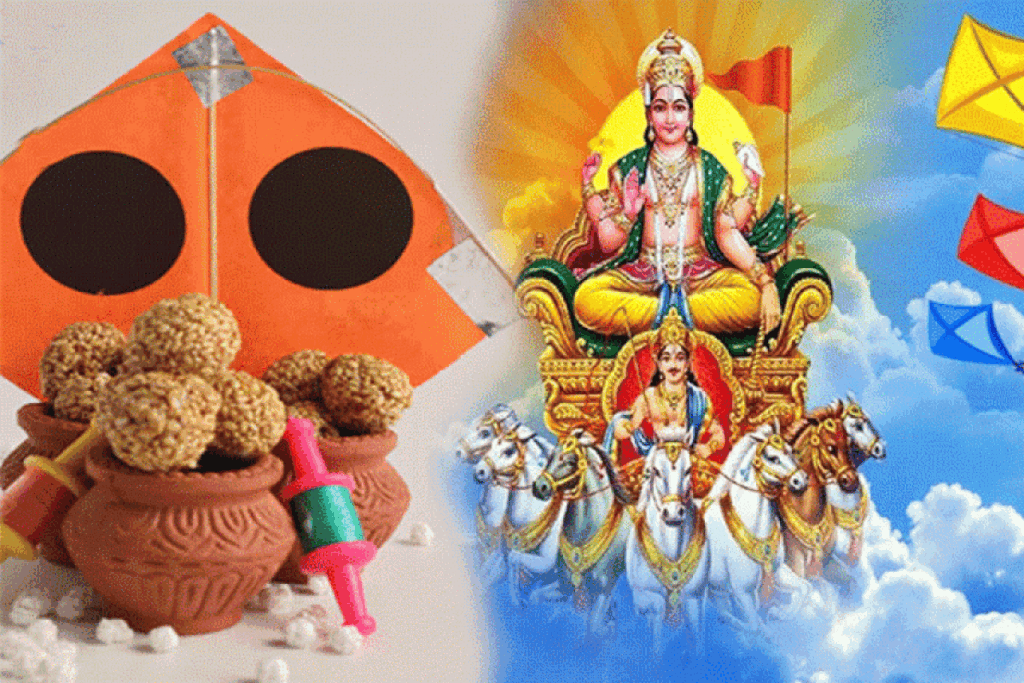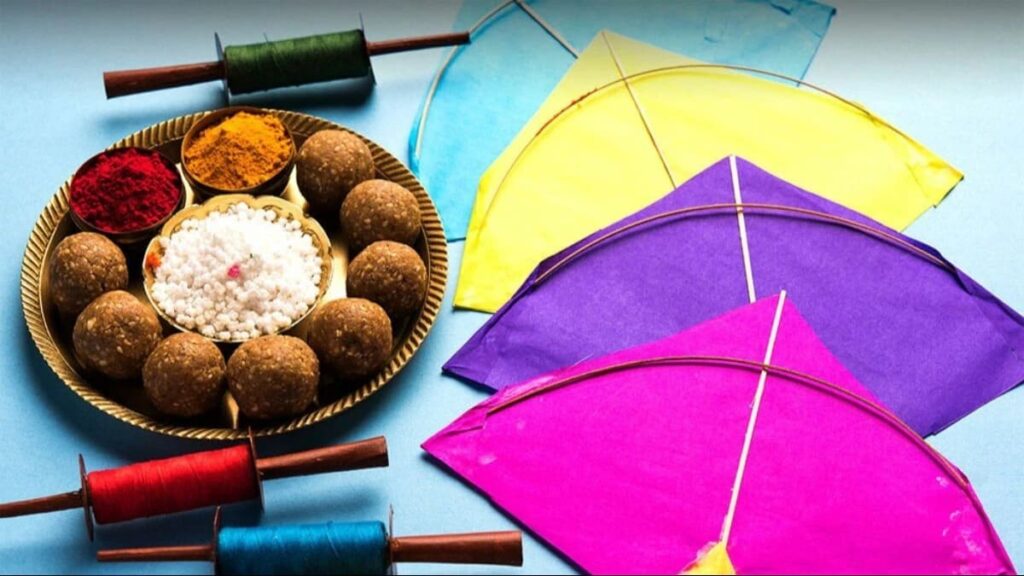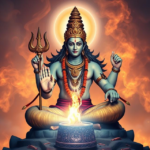Makar Sankranti is one of the most prominent festivals celebrated across India, marking the transition of the Sun into the zodiac sign of Capricorn (Makara). Celebrated on 14th or 15th January each year, this festival holds immense cultural, spiritual, and agricultural significance. It is known by various names across different states, including Pongal in Tamil Nadu, Uttarayan in Gujarat, Magh Bihu in Assam, and Lohri in Punjab. Makar Sankranti not only signifies the end of the cold winter months but also ushers in the harvest season, making it a festival of gratitude and prosperity.

The term ‘Makar Sankranti’ comes from two Sanskrit words: ‘Makar’, meaning Capricorn, and ‘Sankranti’, meaning movement or transition. On this day, the Sun moves from the Tropic of Cancer to the Tropic of Capricorn, marking the beginning of longer days and shorter nights. This celestial change symbolizes the victory of light over darkness and knowledge over ignorance. It is also considered an auspicious time for new beginnings and religious ceremonies.
In Hindu tradition, Makar Sankranti is associated with Surya Devta (Sun God), and devotees worship the Sun for health, wealth, and well-being. Bathing in sacred rivers like the Ganga, Yamuna, and Godavari is believed to purify the soul and wash away past sins.
The Astrological Significance of Makar Sankranti
The term ‘Makar Sankranti’ comes from two Sanskrit words: ‘Makar’, meaning Capricorn, and ‘Sankranti’, meaning movement or transition. On this day, the Sun moves from the Tropic of Cancer to the Tropic of Capricorn, marking the beginning of longer days and shorter nights. This celestial change symbolizes the victory of light over darkness and knowledge over ignorance. It is also considered an auspicious time for new beginnings and religious ceremonies.
In Hindu tradition, Makar Sankranti is associated with Surya Devta (Sun God), and devotees worship the Sun for health, wealth, and well-being. Bathing in sacred rivers like the Ganga, Yamuna, and Godavari is believed to purify the soul and wash away past sins.
How Makar Sankranti is Celebrated Across India

Despite being celebrated under different names and customs, the essence of Makar Sankranti remains the same throughout India: joy, gratitude, and festivity.
1. Uttar Pradesh and Bihar
In Uttar Pradesh and Bihar, Makar Sankranti is celebrated with great enthusiasm. Devotees take an early morning dip in the holy rivers and offer prayers to the Sun God. A traditional dish made of til (sesame) and gur (jaggery) called tilkut is prepared and distributed among family and friends. Kite flying is a popular activity, symbolizing freedom and joy.
2. Gujarat
In Gujarat, Makar Sankranti is known as Uttarayan, and kite flying takes center stage. The sky is filled with vibrant kites, and people indulge in friendly kite-flying competitions. Special delicacies like Undhiyu (a mixed vegetable dish) and Chikki (a sweet made of jaggery and nuts) are prepared to mark the occasion.
3. Tamil Nadu
In Tamil Nadu, the festival is celebrated as Pongal, a four-day event dedicated to nature and farmers. The highlight of the festival is the preparation of Pongal, a sweet dish made from rice, jaggery, and milk. Houses are decorated with beautiful Kolams (rangoli designs), and cows are worshipped on Mattu Pongal, a special day of the festival.
4. Punjab and Haryana
In Punjab and Haryana, Lohri is celebrated on the eve of Makar Sankranti. People gather around bonfires, sing traditional songs, and offer Rewri, Popcorn, and Groundnuts to the fire as a gesture of gratitude. The next day, known as Maghi, is observed by taking a holy dip and enjoying traditional dishes like Sarson Ka Saag and Makki Ki Roti.
5. Assam
In Assam, the festival is known as Magh Bihu. People celebrate the harvest season by preparing rice cakes and sweets called Pitha. Bonfires are lit, and feasts are organized with friends and family, making it a joyous occasion.
Delicacies of Makar Sankranti
Food plays a significant role in the celebration of Makar Sankranti. Various regional delicacies are prepared using ingredients like sesame seeds, jaggery, and rice, symbolizing prosperity and good health.
- Tilgul: A sweet made of sesame seeds and jaggery, popular in Maharashtra.
- Pongal: A Tamil dish made from newly harvested rice, jaggery, and milk.
- Tilkut: A traditional sweet of Bihar made from roasted sesame seeds and jaggery.
- Chikki: A crunchy sweet made from jaggery and peanuts, popular in Gujarat and Maharashtra.
- Pitha: Rice cakes prepared in Assam during Magh Bihu.
The Tradition of Kite Flying

One of the most exciting aspects of Makar Sankranti is the tradition of kite flying, especially in states like Gujarat, Maharashtra, and Rajasthan. The clear blue sky dotted with colorful kites creates a mesmerizing view. Kite flying during Makar Sankranti is believed to have health benefits too, as it exposes people to the early morning sunlight, which is a rich source of Vitamin D.
Spiritual Practices and Rituals
Makar Sankranti is considered an auspicious day for spiritual growth and religious practices. Some common rituals include:
- Holy Bathing: Taking a dip in holy rivers like the Ganga, Yamuna, and Saraswati is believed to purify the soul and wash away past sins.
- Charity: Donating food, clothes, and money to the needy is an important ritual of Makar Sankranti.
- Worship of Sun God: Devotees offer water and prayers to the Sun God, seeking blessings for a prosperous and healthy life.
The Symbolism of Makar Sankranti
Makar Sankranti symbolizes the onset of positivity and prosperity. It marks the end of the dark and harsh winter and the beginning of spring. The festival teaches us the value of gratitude, as it celebrates the hard work of farmers and the bounty of nature.
- Spiritual Symbolism: The festival signifies the victory of light over darkness, a new dawn in life.
- Social Bonding: People come together, share meals, and engage in cultural activities, strengthening their bonds.
- Cultural Unity: Despite regional differences, Makar Sankranti unites the diverse cultures of India under the common theme of harvest and gratitude.
Conclusion

Makar Sankranti is more than just a festival; it is a celebration of life, nature, and togetherness. It reflects the rich cultural heritage of India, where every state adds its unique flavor to the celebration. Whether it’s through kite flying in Gujarat, Pongal preparation in Tamil Nadu, or the bonfires of Lohri in Punjab, the spirit of Makar Sankranti remains the same – joy, gratitude, and a fresh start.
As we welcome the warmth of the Sun and the bounty of the harvest, Makar Sankranti reminds us to be thankful for life’s blessings and to spread happiness around us. Let us embrace this beautiful festival with open hearts and celebrate the spirit of new beginnings.
Related posts:
 Celebrating Hariyali Teej 2023: The Festival of Greenery, Joy, and Togetherness
Celebrating Hariyali Teej 2023: The Festival of Greenery, Joy, and Togetherness
 Shree Krishna Janmashtami: A Festival of Joy and Devotion
Shree Krishna Janmashtami: A Festival of Joy and Devotion
 Hindu Dharma in the Modern Age: Navigating Tradition and Transformation
Hindu Dharma in the Modern Age: Navigating Tradition and Transformation
 Mahashivratri: A Festival of Spiritual Awakening
Mahashivratri: A Festival of Spiritual Awakening
 Raksha Bandhan: A Festival of Love and Protection
Raksha Bandhan: A Festival of Love and Protection
 Barawafat or Milad-un-Nabi: A Festival of Gratitude and Blessings
Barawafat or Milad-un-Nabi: A Festival of Gratitude and Blessings
